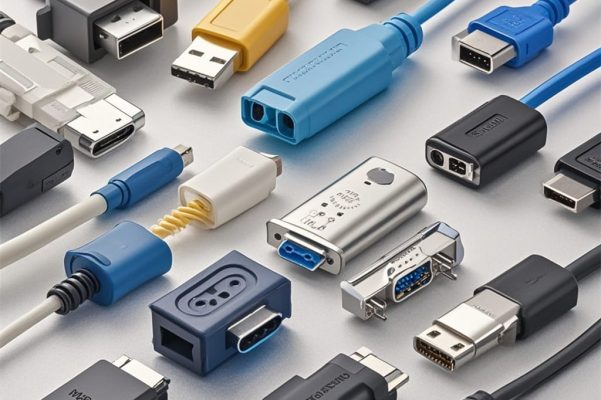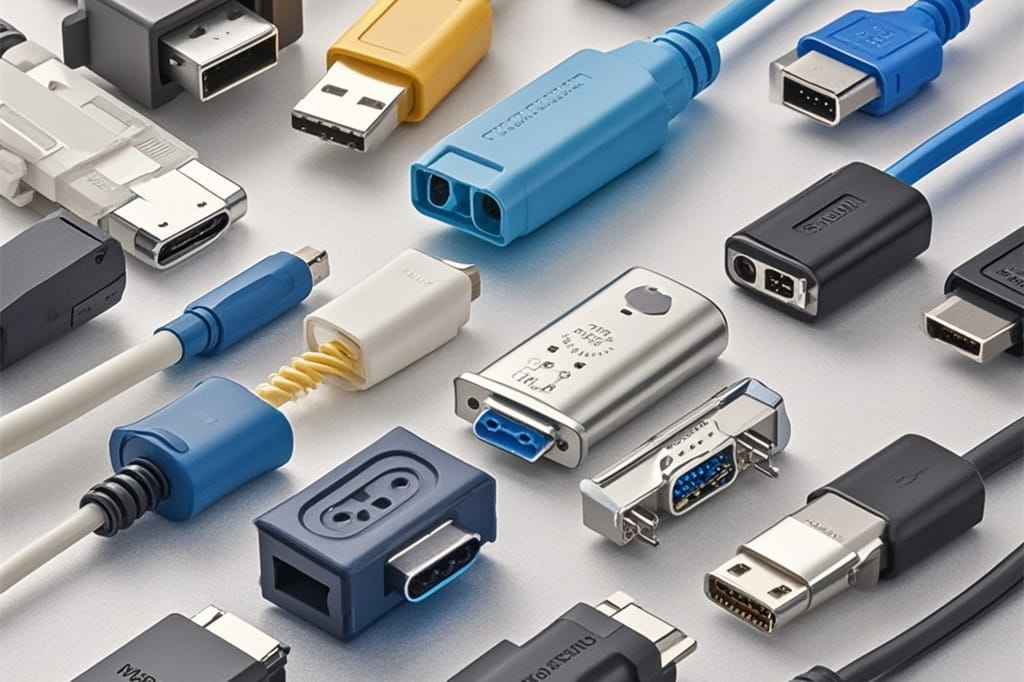Electronic connectors are essential components in modern technology, serving as the vital links that enable the flow of power and data between various parts of electrical and electronic systems. These unassuming yet crucial devices are the unsung heroes of our interconnected world, facilitating the functionality of everything from smartphones to industrial machinery. In this comprehensive guide, we’ll explore the main types of electronic connectors and their diverse applications, shedding light on the intricate world of connectivity that powers our digital age.

Understanding Electronic Connectors
Before delving into the specific types, it’s important to understand what electronic connectors are and why they’re so crucial. An electronic connector is a device that joins two or more electrical circuits together, allowing for the transmission of power, signals, or data. They come in a vast array of shapes, sizes, and configurations, each designed to meet specific requirements in terms of voltage, current, data rate, environmental conditions, and durability.
Electronic connector companies invest significant resources in research and development to create innovative solutions that meet the ever-evolving demands of various industries. From consumer electronics to aerospace applications, these companies play a pivotal role in advancing technology and ensuring reliable connections in all types of devices and systems.
Main Types of Electronic Connectors
1. Board-to-Board Connectors
Board-to-board connectors are designed to connect printed circuit boards (PCBs) to each other. They come in various styles, including mezzanine connectors for parallel boards and edge connectors for perpendicular connections. These connectors are crucial in creating compact electronic devices where space is at a premium.
Application: Smartphones, tablets, and other compact electronic devices rely heavily on board-to-board connectors to maximize space efficiency while maintaining high-speed data transfer capabilities.
2. Wire-to-Board Connectors
As the name suggests, wire-to-board connectors join wires or cables to PCBs. They come in many forms, such as pin headers, socket connectors, and IDC (Insulation Displacement Connector) types. These connectors are essential for integrating various components within a device.
Application: Computer motherboards use numerous wire-to-board connectors to connect everything from power supplies to front panel controls.
3. Wire-to-Wire Connectors
These connectors join two or more wires or cables together. They include crimp connectors, splice connectors, and various plug-and-socket designs. Wire-to-wire connectors are vital in creating complex wiring harnesses and allowing for modular assembly of electrical systems.
Application: Automotive wiring harnesses extensively use wire-to-wire connectors to create complex, yet serviceable, electrical systems in vehicles.
4. Circular Connectors
Circular connectors are characterized by their round shape and are known for their ruggedness and reliability. They often feature multiple pins arranged in a circular pattern and may include locking mechanisms for secure connections.
Application: Military and aerospace industries frequently use circular connectors due to their durability and ability to withstand harsh environmental conditions.
5. Rectangular Connectors
Rectangular connectors encompass a wide range of designs, including D-subminiature (D-sub) connectors, SCSI connectors, and many industrial interface connectors. They often provide a high pin count in a compact form factor.
Application: Computer peripherals, such as monitors and printers, traditionally used D-sub connectors for video and data connections.
6. Fiber Optic Connectors
These specialized connectors are designed for use with fiber optic cables, allowing for high-speed data transmission using light signals. Common types include SC, LC, and ST connectors.
Application: Telecommunications networks and data centers rely on fiber optic connectors to achieve high-bandwidth, long-distance data transmission.
7. RF Connectors
Radio Frequency (RF) connectors are designed to work with coaxial cables and are crucial for maintaining signal integrity in high-frequency applications. Common types include BNC, SMA, and N-type connectors.
Application: Television broadcasting equipment and wireless communication systems use RF connectors to ensure reliable transmission of high-frequency signals.
8. Audio and Video Connectors
This category includes a wide range of connectors specifically designed for audio and video applications. Examples include RCA connectors, HDMI, DisplayPort, and XLR connectors.
Application: Home entertainment systems use various audio and video connectors to link components such as televisions, speakers, and gaming consoles.
9. Power Connectors
Power connectors are designed to safely transmit electrical power. They come in various sizes and configurations to handle different voltage and current requirements. Examples include AC power connectors (like the common IEC connector) and DC power connectors.
Application: Computer power supplies use standardized power connectors to provide electricity to various components within the system.
10. USB Connectors
Universal Serial Bus (USB) connectors have become ubiquitous in modern electronics. They come in various types (e.g., USB-A, USB-C) and are used for both data transfer and power delivery.
Application: Smartphones, tablets, and countless other devices use USB connectors for charging and data synchronization.
The Role of Connector Manufacturers
Connector manufacturers play a crucial role in the electronics industry, constantly innovating to meet the changing needs of various sectors. These companies not only produce standard connector types but also develop custom solutions for specific applications. They must balance factors such as electrical performance, mechanical durability, size constraints, and cost-effectiveness in their designs.
As technology advances, connector manufacturers face new challenges, such as increasing data rates, miniaturization, and environmental concerns. For instance, the rise of 5G technology has led to the development of new high-frequency connectors capable of handling the increased bandwidth requirements.
Conclusion
Electronic connectors are the unsung heroes of our interconnected world, enabling the functionality of countless devices and systems we rely on daily. From the simplest household appliances to the most advanced aerospace technologies, these components play a vital role in ensuring reliable electrical and data connections.
Understanding the main types of electronic connectors and their applications not only provides insight into the intricate workings of our devices but also highlights the incredible engineering that goes into even the smallest components of our technological world. As we look to the future, it’s clear that electronic connectors will continue to play a crucial role in shaping the devices and systems of tomorrow.










